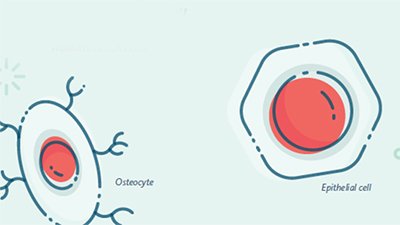
Feedback: Does a molar pregnancy have anything to do with a tooth?
Why is a molar pregnancy called that? Dr. Elizabeth Mitchell, AiG–U.S., responds, explaining the interesting connection.
Since publishing Feedback: A Pro-life Doctor’s View on Molar Pregnancies we have received additional questions. One recently asked about the origin of the odd name—molar—and whether there is any connection between molar pregnancy and something involving a tooth.
The words mole and molar in hydatidiform mole and molar pregnancy come from the Latin word mola, which means either “millstone” (hence its use to describe your grinding teeth—molars) or “false conception.” (Hydatidiform comes from a Greek word associated with water and describes the clusters of fluid-filled vesicles seen in this abnormal placental tissue.) The Latin word mola is a cognate (a relative) of an ancient Greek word that likewise meant either “millstone” or “a hard formation in a woman’s womb.”1 There may or may not be a relationship between the two meanings, as the shades of original meaning are obscured by time. Pliny, a first-century Roman scholar who compiled much of the knowledge of the ancient world including that of the Greeks, wrote that the word mola referred to a “false conception.”2 Over time the words mole and molar also came to refer to a “mass,” but throughout the centuries they continued to have a special medical association with molar pregnancies in addition to a “dental” association with our grinding teeth.
It is interesting that the person who wrote to us mentioned something involving a “tooth” in association with a molar pregnancy. Without knowing the specifics of her situation, it is of course impossible to know whether or not she had a molar pregnancy or some other condition. She may well have had a molar pregnancy and presumed an association with the tooth of the same name.
There is another possibility, however.
Because teratomas often contain tissues we normally associate with developed human bodies and even occasionally resemble embryos, it is important to realize that they are not in any way associated with pregnancy or pregnancy loss.
Another question involving a “tooth” and the question of fetal loss does occasionally arise in connection with dermoid tumors, also known as teratomas. Though often benign, there are malignant forms. Because these tumors often have hair or teeth, some people historically have thought they were related to a pregnancy. They are not, however, associated with either molar pregnancies or any other kind of pregnancy. But because teratomas often contain tissues we normally associate with developed human bodies and even occasionally resemble embryos, it is important to realize that they are not in any way associated with pregnancy or pregnancy loss.
Questions about these unusual tumors sometimes arise in connection with discussions about abortion or embryonic stem cell research. For instance, one of our Answers in Genesis speakers asked me to respond to this question that came to him after a conference:
What is a dermoid tumor since it is made up of human like parts such as hair, teeth, and calcium for bones?
As I wrote to the questioner, this has been asked by many concerned people for centuries.
Dermoid tumors (teratomas) are tumors made up of cells from all three “germ layers,” which are cell types that are normally formed as an embryo develops along the continuum from zygote (fertilized egg) to embryo. As you probably know, all the body’s nucleated cells (except mature eggs and sperm) contain a full complement of DNA. Most of early embryonic development consists of “turning on” and “turning off” of parts of the DNA in various cells so they can differentiate into the tissues needed to make a fully formed organism.
Early in embryonic development, cells differentiate into three “germ cell types,” each of which further differentiates into various tissues. Some cells are even partitioned off to become the placenta, a marvelous organ which functions as an interface between the baby and mother and is then discarded when no longer needed.
Because they contain tumor cells that are imitating all three germ cell types, dermoids (teratomas) can develop human-looking parts—hair, teeth, fingers, eye parts, and so forth—a wide variety of bits ‘n’ pieces—so much so that in the past people were afraid they were actually babies with massive birth defects (“monsters” as the name teratoma implies, being derived from a Greek word meaning “monstrous tumor”).
The confusion created by the appearance of hair and teeth in particular has led some people to be concerned that removal constituted some sort of abortion. (In a similar but contrasting line of thinking, ectopic pregnancies—in which implantation has taken place in an abnormal location such as the fallopian tube—actually are associated with real pregnancies; they always result in the death of the embryo and require removal to save the life of the mother.)
Dermoid tumors are at least four times more common in female patients. Having these unusual-looking tumors develop in virginal females really created a frightening puzzle for some before modern genetics and medical science learned more. Their existence has also been used to argue that abortion is acceptable by equating a genuine embryo or fetus with a tumor.
Although most of these tumors are benign, a small percentage are malignant. Normally, they are removed, not only to ensure that they are benign and to prevent the one to three percent chance of malignant transformation, but also to prevent torsion—a twisting on the stalk which strangulates the organ (such as an ovary) that has the tumor, causing severe pain, gangrene, and death. Those with “well-formed” human-like parts such as teeth and hair are more likely to be benign. One particularly malignant form (polyembryoma) contains one or more embryo-like collections of cells that resemble the earliest stages of embryonic development but never past the eighteenth day level of development. However, even these embryo-like tumors, despite their sometimes disturbing appearance, are never on the continuum between zygote and embryo/fetus. They can never develop the way an embryo is able to develop, in which continuing development normally produces a recognizable person. They are at best collections of “unusable spare parts” in a neoplastic “trash heap.”
Teratomas are not created by a union of genetic material or even by any sort of natural cloning process (like twinning) but rather by a group of very confused cells in which the normal cellular growth control and differentiation mechanisms have gone awry. The same can be said of all tumors, both benign and malignant. (For this reason, tumors are also called neoplasms, meaning “new growth,” as they represent out-of-control cellular growth.) They are not created in the image of God any more than a brain tumor or a hormone-producing tumor is. Teratomas are not any form of person—just weird-looking tumors.
Despite their odd appearance, they should in no way be thought of as a pregnancy loss. As I said, they are also not related to molar pregnancy. Nevertheless, a patient who is told the mass growing inside her has a tooth visible on ultrasound could be understandably concerned!
Thanks for opportunity to answer your good questions.
Elizabeth Mitchell, MD
This information is intended for general education purposes only and is not intended as professional medical advice. The information should not be relied upon as a substitute for medical advice from your doctor or other healthcare professional. If you have specific questions about any medical condition, diagnosis, or treatment, you should consult your doctor or other healthcare provider.
Footnotes
- Henry George Liddell and Robert Scott, compilers, A Greek-English Lexicon (1996) Oxford: Clarendon Press.
- Oxford English Dictionary Online, s.v “Mola, n.1”
Recommended Resources

Answers in Genesis is an apologetics ministry, dedicated to helping Christians defend their faith and proclaim the good news of Jesus Christ.
- Customer Service 800.778.3390
- Available Monday–Friday | 9 AM–5 PM ET
- © 2025 Answers in Genesis





